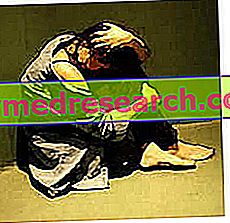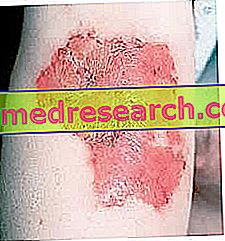What's this
Kobe meat (神 戸 ビ ー フ or Kōbe bīfu ) is a valuable food of animal origin.

More precisely, it is the meat obtained from the slaughter of a typically eastern bovine breed, part of the Tajima stock - Japanese black cattle - and bred in the prefecture of Hyōgo. Other names used for this product are: Kobe niku (神 戸 肉, "Kobe meat"), Kobe-gyu (戸 牛) or Kobe-ushi (戸 牛, "Kobe bovle").
Its organoleptic and gustatory characteristics, considered unique and inimitable, are first of all due to a particular breeding method, but they are also evaluated in the preliminary phase to the marketing. The fundamental principles are established by the "Kobe Beef Marketing and Distribution Promotion Association", and aim to standardize the superior quality level of this product.
Kobe beef is a food of animal origin. Of the first fundamental group of foods, it is rich in proteins of high biological value, vitamins and specific minerals of the meat. It also has a considerable lipid intake, which makes it unsuitable for ordinary diets, especially when overweight. Moreover, like all other meats, it can be advised against or not very suitable in the diet of those suffering from certain metabolic, hereditary or acquired pathologies. Later we will go into detail.
Kobe meat can be cooked like a simple steak - "simple" is actually a very reductive term, which indicates the essentiality of the passages, but not their ease of execution - sukiyaki, shabu-shabu, sashimi and teppanyaki .
Kobe meat is known above all for its characteristic flavor, for its softness and for the notable percentage of fat which is extremely distributed inside the muscular bundles (called marbling or veining). Together with Matsusaka and Ōmi (Yonezawa), Kobe beef is globally considered one of the three best cattle in Japan and perhaps in the world (Sandai Wagyuu, or "the three big steers").
Kobe meat is very expensive, as only about 3, 000 head of cattle can be marketed as such. In March 2018, the Kobe meat imported and sold at Harrods (London) had a record price of £ 625 per kg (over 706 euros per kg); on average it is available, in small denominations, at just under half of this price. In Japan, all cattle, not just those that end up labeled Kobe meat, can be traced - via a 10-digit number - back to each phase of their entire life cycle.
Nutritional Properties
Nutritional properties of Kobe meat
Kobe flesh is a food rich in high biological value proteins, specific vitamins and minerals. However, it has a high energy supply, caused above all by the abundance of fat.
The calories of Kobe meat are mainly supplied by lipids (28 g / 100 g of food) and proteins (22 g / 100 g of food); carbohydrates (complexes, glycogen) are absent or irrelevant. Peptides have a high biological value, that is they contain all the essential amino acids in the right quantities and proportions with respect to the human model. Fatty acids are predominantly unsaturated, especially monounsaturated (omega 9 oleic acid - OA), followed by saturates (11 g / 100 g of food) and a few polyunsaturated ones - consisting predominantly of omega 6. Cholesterol is present in significant quantities.
Kobe meat does not contain dietary fiber, gluten and lactose; the histamine concentration is not known, but it should be irrelevant. Instead it has abundant amounts of purines and phenylalanine amino acid.
From a vitamin point of view, Kobe meat is a food that does not differ from the average of products belonging to the same category - meats. Water-soluble - more abundant - contains especially those of group B - for example riboflavin (vit B2), niacin (vit PP), pyridoxine (vit B6) and cobalamin (vit B12). The fat-soluble ones seem less relevant, of which a more important fraction of the retinol (vit A) and / or equivalents (RAE) can be seen.
Even with regards to mineral salts, Kobe meat does not stray too far from its own group. The content of iron is good, but also of phosphorus and zinc; it also brings potassium - but it is not considered a primary nutritional source of this mineral.
Diet
Kobe meat in the diet
Kobe meat is a food that can be inserted, occasionally and in small portions, in most diets. Let us not forget that due to the principle of food variability, any product should alternate with other foods with the same task. In this case we talk about other meats (game, offal, poultry), but also fishery products (finfishes, crustaceans, molluscs) and eggs.
Even cooked without the addition of fats, with its 220 kcal / 100 g, Kobe meat cannot be used in the diet for overweight. On the contrary, in this case it would be advisable to prefer lean meats such as chicken, turkey, horse breast, lean fish, etc.
Due to the questionable content of cholesterol and saturated fats - even considering the considerable quantitative importance of monounsaturated omega 9 (OA) - it is not a raw material to be included in the diet against hypercholesterolemia. Of the same fundamental group, the fishes - pinnutes properly called - rich in omega 3 (EPA and DHA) would be more appropriate.
If not in the presence of obesity, it is a hypothetically neutral food for diets aimed at subjects suffering from hyperglycemia or type 2 diabetes mellitus, hypertriglyceridemia and hypertension.
Kobe meat, rich in high biological value proteins, is very useful in the diet of those who have a greater need for all essential amino acids; for example: pregnancy and lactation, growth, extremely intense and / or prolonged sports, old age - due to an eating disorder and a tendency to geriatric malabsorption - pathological malabsorption, recovery from specific or generalized malnutrition, debasement etc.
Kobe meat is one of the products to be avoided or consumed with extreme moderation, in the case of severe hyperuricemia - a tendency to gout - and calculosis or renal lithiasis with uric acid crystals. It should be completely excluded from the phenylketonuria diet. It does not show contraindications for lactose intolerance and for celiac disease; it should also be harmless for histamine intolerance.
Kobe meat is an appreciable source of bio-available iron and participates in the coverage of metabolic needs, which is higher in fertile, pregnant women, marathon runners and vegetarians - especially in vegans. Note : iron deficiency can lead to iron deficiency anemia. It contributes to satisfying the phosphorus requirement, a very abundant mineral in the body - in particular in the bones in the form of hydroxyapatite, in the phospholipids of the cell membranes and in the nervous tissue etc. The zinc content - essential for hormone production and antioxidant enzymes - is appreciable. It is not to be considered an essential source of potassium, but still participates in satisfying the organism's request - greater in case of increased sweating, for example in sports, increased diuresis and diarrhea; the lack of this alkalizing ion - necessary for the membrane potential and very useful in the fight against primary arterial hypertension - induces, especially related to lack of magnesium and dehydration, the onset of muscle cramps and general weakness.
Kobe beef is rich in B vitamins, all coenzyme factors of great importance in cellular processes. Like the other meats, it can therefore be considered an excellent support for the functioning of the various body tissues. Vitamin A and its precursors - RAE, which also have an antioxidant function - maintain an optimal visual and reproductive function, allow cell differentiation, etc.
It is not allowed in the vegetarian and vegan diet. It is inadequate for Hindu and Buddhist food; Kobe meat should be considered a food suitable for Judaism, but not for Islam - due to the lack of basic slaughtering criteria.
After total cooking, it is also allowed in the diet during pregnancy.
The average portion of Kobe meat is about 100 g (220 kcal).
Kitchen
How to cook Kobe meat?
The Kobe meat has the characteristic of being fat but, at the same time, very tender - an aspect attributable to the consistency of the muscle fibers, but also to the type and percentage of connective tissue. For this reason, it is known as the meat ingredient coming from land animals that is more suitable for raw processing, in particular Sashimi.
Other traditional Kobe meat recipes are Sukiyak and Shabu-shabu, two traditional Japanese dishes prepared and served in nabemono or nabe, one of the hot pots of Chinese origin. Teppanyaki, equally traditional, is the name of a process flambéed directly on the plate.
In the West instead, Kobe meat is almost exclusively used for dishes or main courses, more precisely processed with fast and intense cooking, either sautéed or grilled or grilled. It is essential that this food is kept to the blood, even if it is "almost" impossible to make it dry and hard with excessive cooking. Since this is not a local product, Oriental interpretations are especially popular, for example with sweet and sour sauces or soya.
Description
Kobe meat description
The primary characteristic of kobe meat is the marbling, that is the branching of the intramuscular fat which, coming from it, gives it an unmistakable appearance; as we shall see later, this property is measured with a specific evaluation index (BMS).
Due to its chemical composition, or the ratio of its fatty acids, the melting point of the flesh of Kobe meat - and of all Tajima cattle - is lower than that of common beef. In fact, Wagyu meat contains a fraction of unsaturated fats that is much higher than the average of beef raised in the rest of the world. It brings high levels of oleic acid (monounsaturated omega 9), known to be the fatty acid characteristic of olive oil - and not only - which in various studies has been shown to reduce bad LDL cholesterol.
On the palate, it is distinguished by the typical melting and much more delicate flavor but still rich in other cattle bred with different systems.
Trade
Characteristics of Kobe breeding
Kobe beef is a Japanese brand registered by the "Kobe Beef Marketing and Distribution Promotion Association" (神 戸 流通 流通 推進 会 Kōbeniku Ryūtsū Suishin Kyōgikai).
Kobe cattle are fed on grain-based fodder - high energy density food - and sometimes they are brushed to improve the condition of the coat.
All Tajima cattle are fattened longer than the others, and have a life cycle that varies between 26 and 32 months, against, for example, 18 months for American cattle.
Japanese cattle farms impose severe movement restrictions. The beasts are confined to small cells; this aspect, besides conciliating with the not too abundant land surface of the nation, allows to keep the muscle fibers soft.
Kobe meat requirements
The Kobe meat, to be considered as such, must satisfy all the following conditions:
- Tajima cattle born in Hyōgo prefecture
- Farming in the Hyōgo prefecture
- Bullock (castration of bull or beef)
- Transformed in the slaughterhouses of Kobe, Nishinomiya, Sanda, Kakogawa or Himeji in Hyōgo prefecture
- Marbling ratio (marbling or veining of intramuscular fat), called BMS, level 6 and above
- Meat quality score of 4 or 5
- Gross weight of the meat of an animal equal to or less than 470 kg.
Kobe meat in the world
Before 2012, Kobe meat could not be exported from Japan. The first exports were those of Macao, in January 2012, then of Hong Kong in July 2012. Since then, they also began in the United States, in Singapore, in Thailand, in the United Kingdom and in Canada.
The increase in popularity of Japanese beef has led to a commercial increase in demand, and therefore to the creation of "Kobe-style" beef, obtained from the crossing of Wagyu - raised locally, however - with Angus cattle. US and Breton farms then attempted to copy the Kobe breeding specification. From the first Wagyu head of cattle imported in the 1970s, today in the USA there are as many as 150 farms containing tens of thousands of Wagyu cattle.
The meat produced by these crosses is aesthetically different from that of Kobe, which is darker, although this problem seems to be largely linked to design; from the organoleptic and gustatory point of view, more intense notes are perceived, typical of Angus meat. In truth, unconsciously, American diners seem to prefer foods more similar to those of tradition than the very particular product from overseas. Some say it is one of the many culinary trends, nothing more. To fill this gap and exploit the influence of consumers at the same time, various "Kobe-style" meat producers declare that the only differences with the original are largely aesthetic.
In Europe, UK food retailer Asda - owned by Walmart - introduced Wagyu meat in late 2011, with a meat-based butcher line from a Yorkshire farm; the animals were the result of the cross between Holstein cows and Wagyu males. This has not only made the "Kobe style" meat cheaper, but has also accustomed consumers in the United Kingdom to a product with intermediate marbling. In June 2014, the German discounter Aldi announced that it would introduce Wagyu beef steaks, "each store received a number of 50 steaks, at a competitive price of £ 6.99 for a 225g sirloin." However, Aldi's Wagyu beef comes from New Zealand, where cattle are fed exclusively on grass and are left to graze, more in line with changing animal welfare standards.
Labeling of Kobe meat
The increase in popularity of Kobe meat in the world, as often happens, has opened the door to counterfeiting and improper use of the brand. Due to the lack of legal recognition in the United States, it is still possible to sell meat labeled incorrectly as Kobe beef - not as it should be, or "Kobe style". The Kobe Beef Marketing and Distribution Promotion Association has planned to publish brochures on Kobe beef in foreign languages for correct product information.
Japan has established a committee to promote the export of Wagyu beef.
History
Historical outline of Kobe meat
The cattle were imported from China to Japan at the same time as rice cultivation, in the second century AD, corresponding to the Yayoi period. Until the Meiji Restoration (1868), they were used exclusively as draft animals, especially in agriculture, forestry, and for extraction or transportation, and as a source of fertilizer. Milk consumption was still unknown and, for cultural and / or religious reasons, the meat was not eaten.
Japan was effectively isolated from the rest of the world from 1635 until 1854; there was no possibility of genetic intrusion foreign to the local livestock population during this period. Between 1868, (Meiji Restoration) and 1887, about 2600 foreign cattle were imported, including Braunvieh, Shorthorn and Devon; between 1900 and 1910, a large cross of these occurred with the native stock. From 1919 onwards, the various regional populations - heterogeneous - resulting were recorded and selected as "improved Japanese cattle". Four separate stocks were therefore distinguished, based mainly on the greater influence of foreign cattle on hybrids; they were then recognized as real breeds in 1944. These were the four wagyū breeds therefore Black Japanese, Brown Japanese, Japanese Polled and Japanese Shorton. The Tajima constitutes an entire stock of the Japanese Black, the most populous breed (about 90% of the four breeds put together).
Japanese beef consumption remained low until after the war (Second World War). Kobe beef became popular by extending its reach to the entire planet only in the 1980s and 1990s.
In 1983, the "Kobe Beef Marketing and Distribution Promotion Association" was created, to define and promote the Kobe brand, and to regulate the selection of animals labeled as Kobe beef.
In 2009, the USDA banned the importation of all Japanese beef to prevent the foot and mouth epidemic from reaching the American coasts from Japan. The ban was then repealed in August 2012 and, soon afterwards, Kobe meat began to be reimported within the US.



